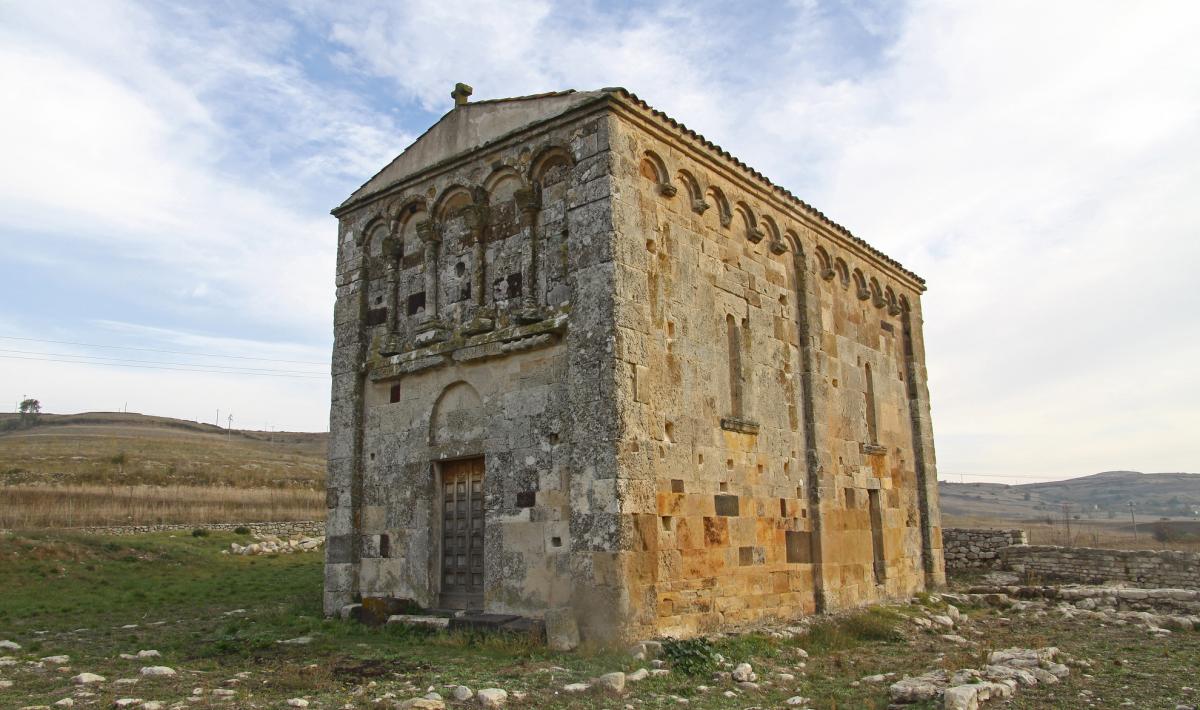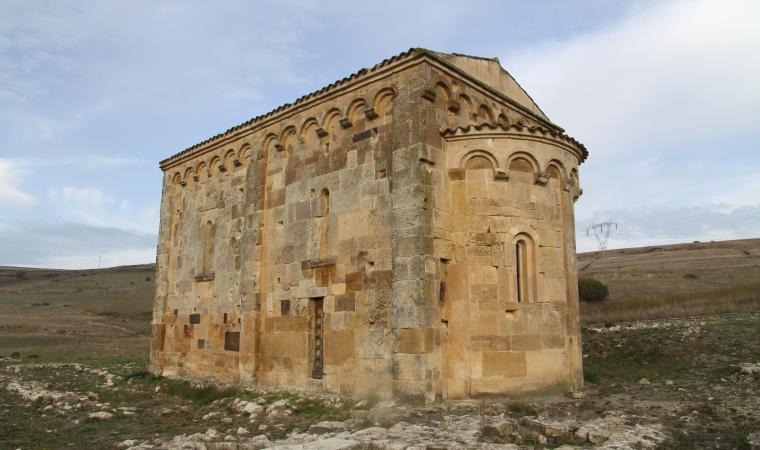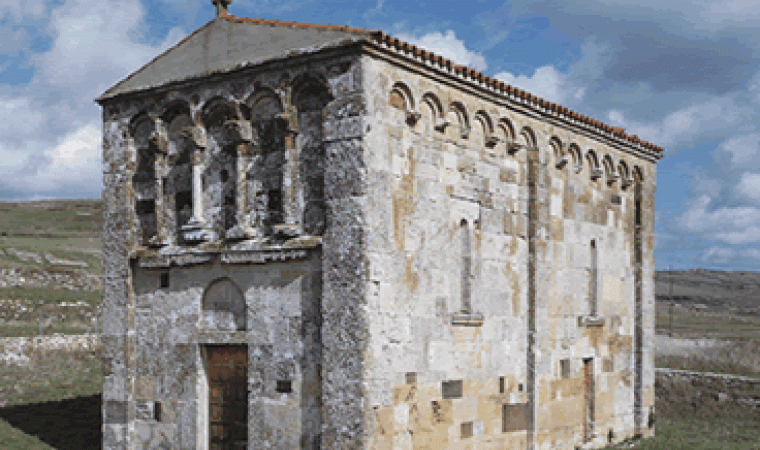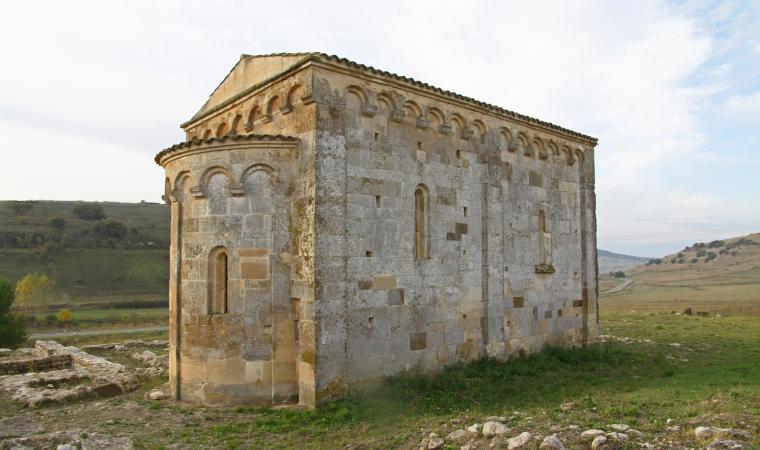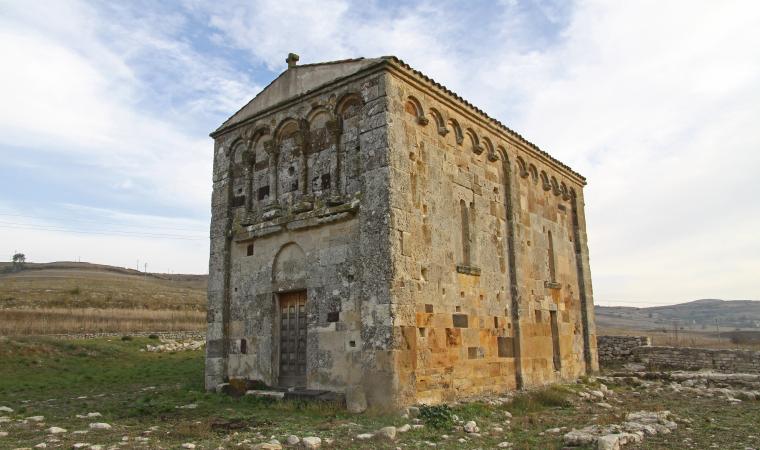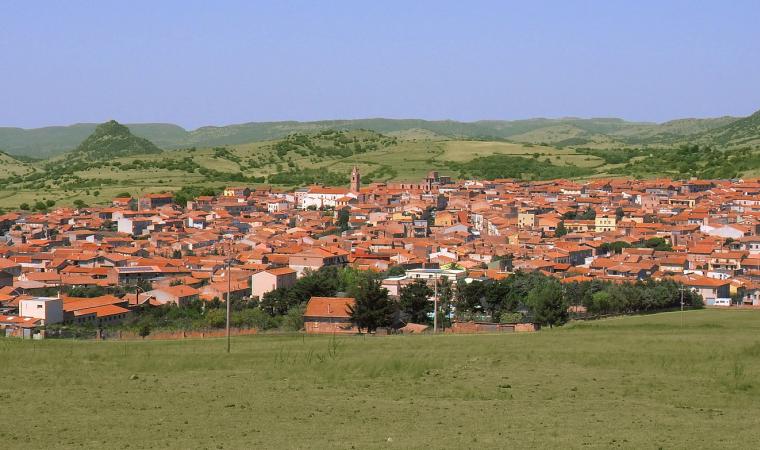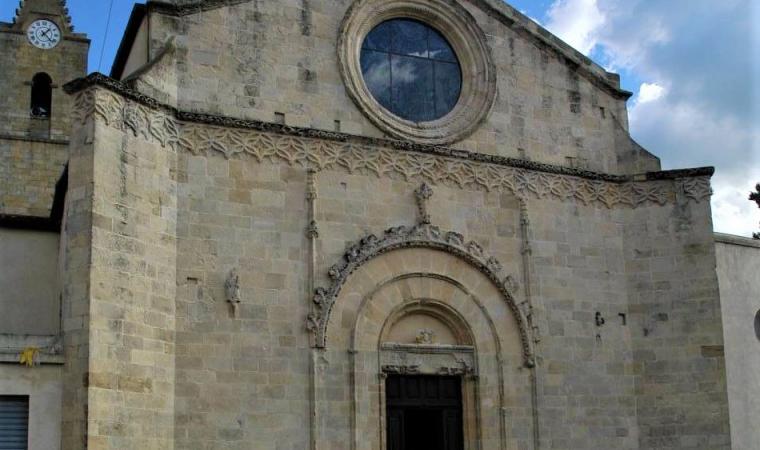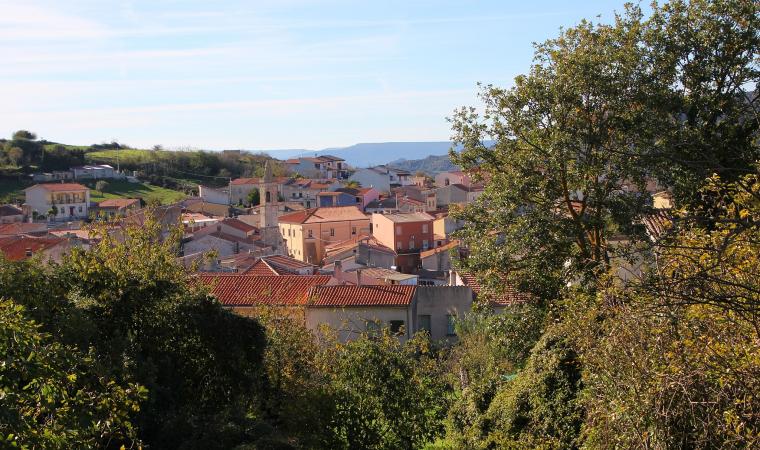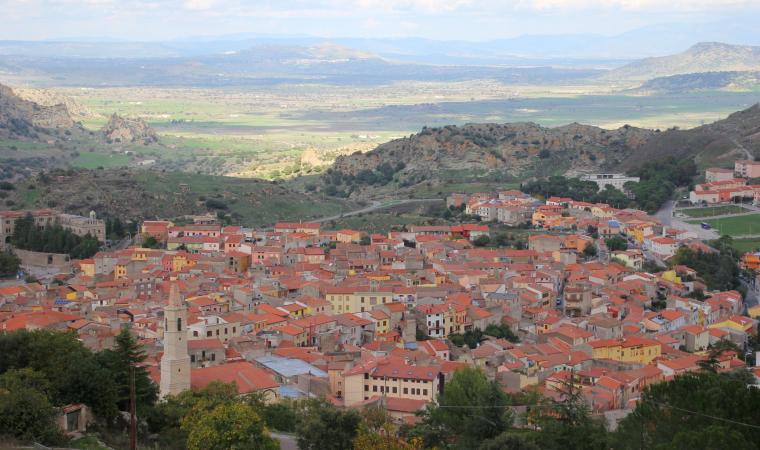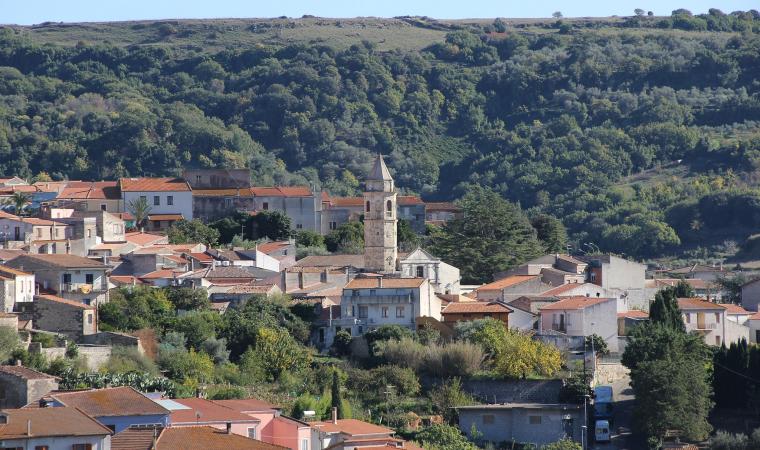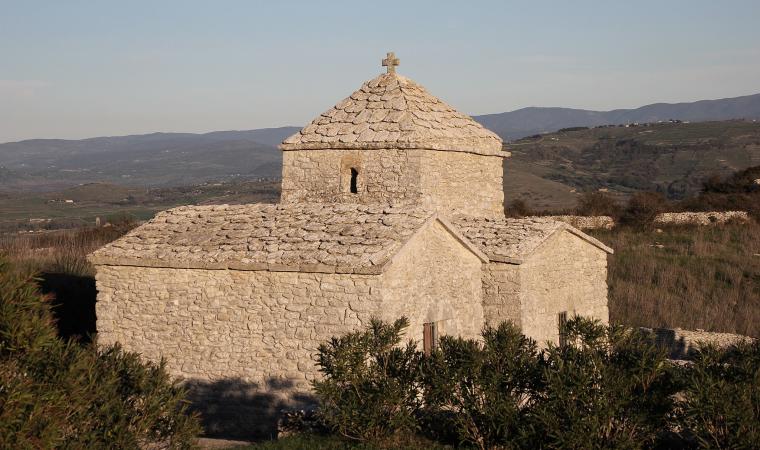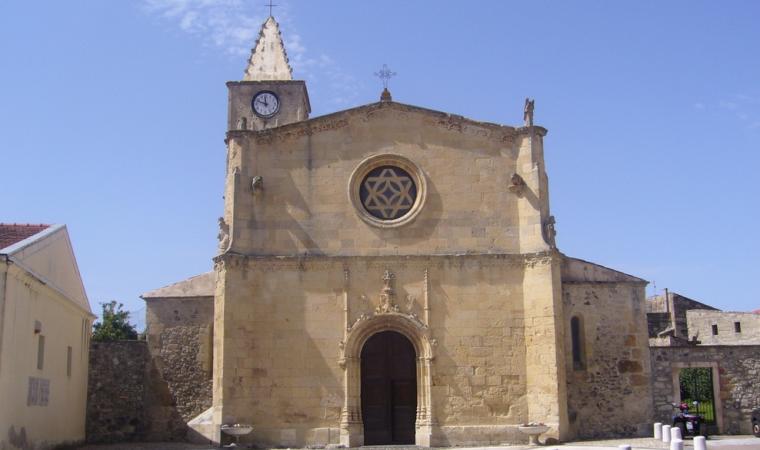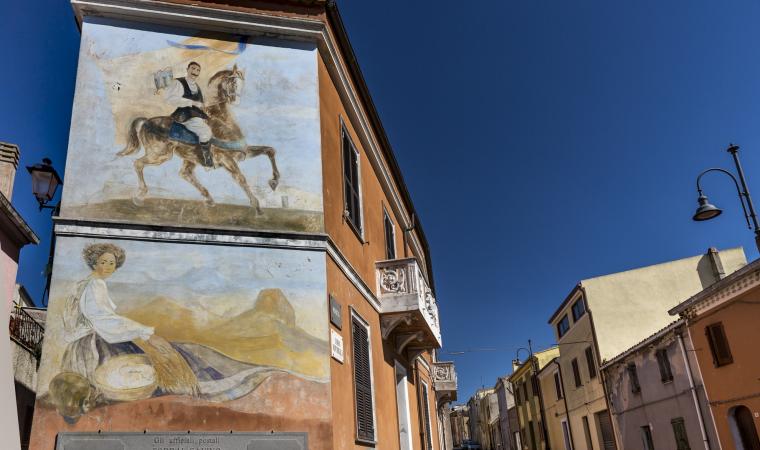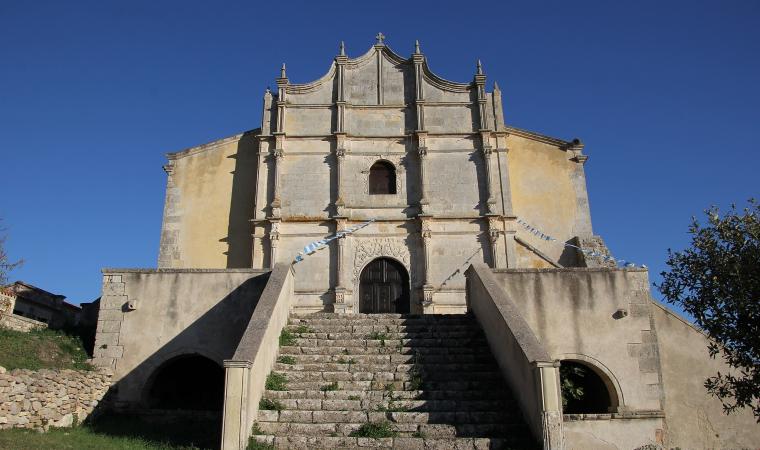It is situated two and a half kilometres from the residential area, in the open countryside, on the Campeda plateau, in a portion of the vast and fertile territory of Semestene, which has revealed important archaeological evidence. The church of San Nicola di Trullas (or Truddas) stands on the ruins of an ancient site: it was originally a villa dating back to the Roman period, on which a Camaldolese monastery was established, along with a surrounding village, during the Middle Ages. It was built at the behest of the Athen family (prior to 1113) and donated to the Camaldolese monks, who added it to the monastery. The first information on it is in the condaghe of San Nicola di Trullas (12th-13th centuries).
It is one of the most interesting Romanesque buildings in Sardinia. Along with the elegance of its architectural forms, you can admire the precious frescoes that decorate its interior and that date back to the 13th century. The façade is separated into two parts by a horizontal frame: in the lower part there is the architrave portal, while in the upper part there is a series of little arches on columns, creating a false loggia. Every little column has a suspended capital on top of it, decorated by incisions or reliefs. Between one arch and the next, you will see ashlars with housings for ceramic basins. Other little arches also run along the end of the sides and the apse, which are accompanied by a central lesene. On the sides, the light penetrates through two single-light windows. Inside, the room with a single nave has two square bays that have cross-vaults and are separated by a transverse arch set on lesenes.
At the beginning of August, the festivity of Saint Nicholas takes place: a procession reaches the little rural church in order to take the statue of the saint to the village. A week later, the religious and civil celebrations begin. Once they are over, the reverse journey takes place, to return the simulacrum to the sanctuary. Among the churches, there is also the parish church of San Giorgio which deserves a visit. It dates back to the 12th century and is located in a scenic position. The medieval village of Semestene occupies a fertile valley crossed by several torrents, at the foot of the volcanic Mount Benazzosu, surrounded by other slopes. This is a territory in which there are numerous Nuraghi and you will see evidence of the Roman era: it appears that, where the village now stands, there was originally one of the seven districts of the big Roman town of Truddas.

